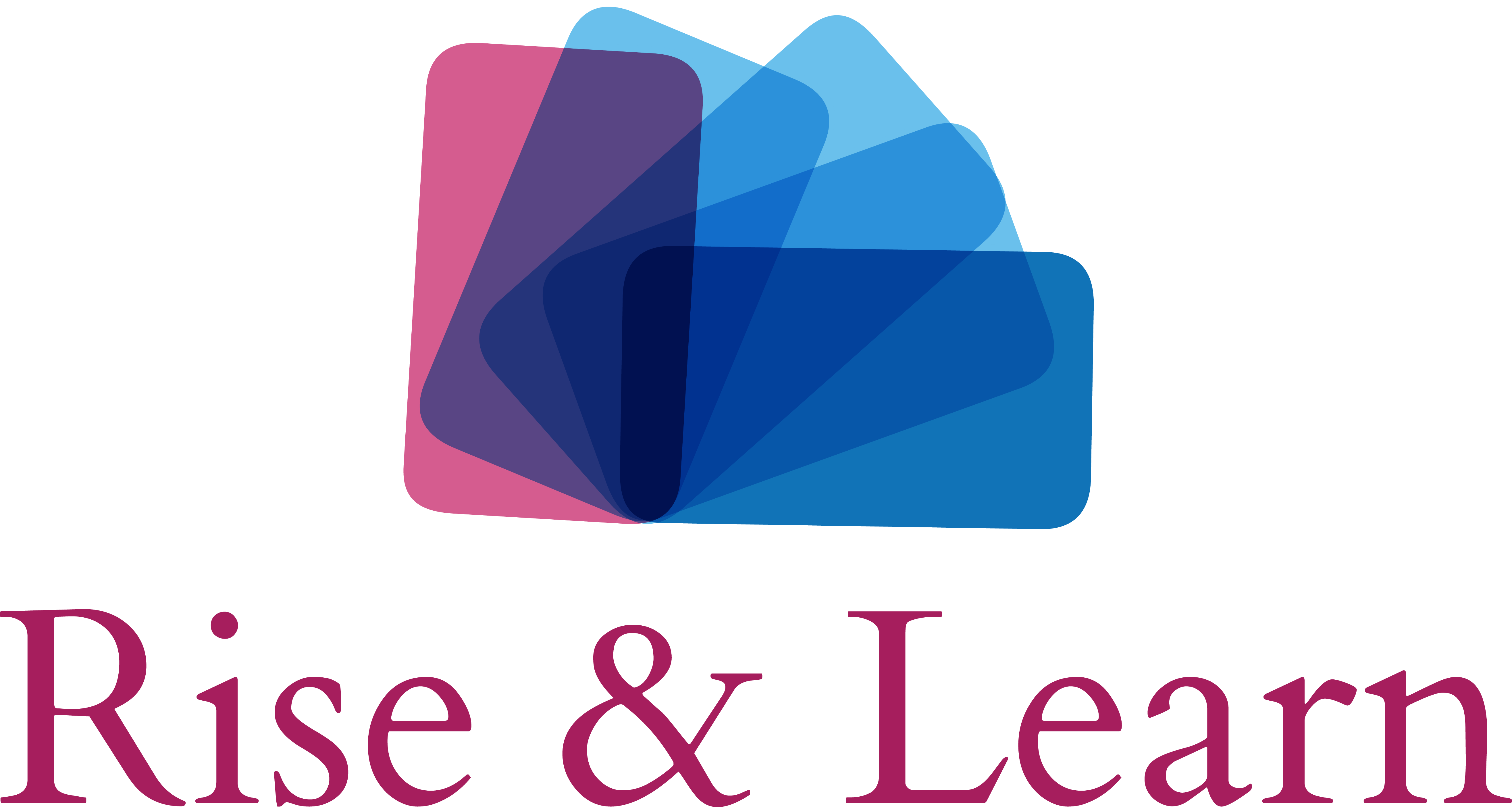Business Continuity Management Programs
Whether it is a natural disaster that sweeps through a city, a virus that sweeps across the nation, or a computer virus that destroys vital electronic information, businesses need to be able to recover their services and operations as soon as possible if such a disaster does occur.
A Business Continuity Program involves planning the recovery of operations when confronted with adverse events such as natural disasters, technological failures, human error, and terrorism.
This course provides a basic understanding of the criteria for a comprehensive program that addresses business continuity in accordance with the National Fire Protection Association (NFPA) standard 1600, entitled Standard on Continuity, Emergency, and Crisis Management.
The course was developed and reviewed with subject matter support provided by certified subject matter experts and industry professionals. Please note, the course materials and content were current with the laws and regulations at the time of the last expert review, however, they may not reflect the most current legal developments. Nothing herein, or in the course materials, shall be construed as professional advice as to any particular situation with respect to compliance with legal statutes or requirements.
0.8 Hours
- Discover the key concepts covered in this course
- Identify the functions of a Business Continuity Program (BCP)
- Recognize the responsibilities of the personnel involved in a Business Continuity Program
- Determine the impact and probability of a business risk
- Identify the main considerations of the risk assessment process
- Identify the steps involved in conducting a Business Impact Analysis
- Identify the factors to consider when creating a strategic plan for a Business Continuity Program
- Knowledge Check: Reviewing Foundational Tasks for Business Continuity Programs
- Identify the content that should be included in a written Business Continuity Program
- Identify the general requirements for a written Business Continuity Program
- Identify the personnel required for a crisis management team
- Identify training requirements for the successful implementation of a BCP
- Recognize BCP testing processes
- Recognize the process for updating the BCP
- Knowledge Check: Reviewing Considerations for Business Continuity Programs
Business Strategy for the Post-pandemic Economy
The COVID-19 pandemic has disrupted life on a global scale, putting lives and businesses in a temporary limbo. But as the world begins to emerge post-pandemic, businesses will play no small part in determining the new normalcy that will shape our lives. In order to meet this responsibility, business leaders must begin to plan new business strategies and operations that will allow their companies to adapt their business models to the new normal.
In this course, you’ll examine topics related to adjusting operational strategies, marketing strategies and supply chain logistics, that will limit risk exposure, and take advantage of digital technologies to allow your organizations to not just survive the crisis, but to recognize opportunities to thrive in its aftermath.
Materials in this course are based upon content provided in partnership with MIT Sloan Management Review.
50 Minuets
- Discover the key concepts covered in this course
- Recognize the business mindset changes necessary for adapting to a post-pandemic business world
- Identify actions for augmenting or supplanting past and current business models
- Identify actions businesses can take to adapt selling and marketing strategies to new market considerations
- Recognize steps businesses must take to reconfigure their supply chains to adjust to future market considerations
Compliance Brief: Contact Tracing
This course is designed to provide learners with information on why contact tracing is conducted by public health workers, and what they can expect to be asked in the event they are called by a contact tracer.
10 Minutes
- Recognize what you can expect if a contact tracer notifies you of possible exposure to an infectious disease
Compliance Brief: Filtering Facepiece Respirators and Masks
Filtering facepiece respirators and masks are types of respiratory protection that are used to safeguard workers and/or those with whom they closely interact. N95 respirators, surgical masks, dust masks and cloth face coverings are designed for different uses.
This course will provide information on the types of masks, the protection they provide and how, specifically, to inspect, don, doff and dispose of an N95 respirator.
30 Minutes
- Recognize best practices for using an N95 respirator
Compliance Brief: Resuming Retail or Restaurant Operations Post-pandemic
As the world begins to get a handle on the COVID-19 pandemic and the case count and exposure risk begin to decrease, local and national governments will begin to relax certain restrictions on business sectors, including retail and restaurants.
Given the relaxing of these restrictions, there is need to take steps to build an infrastructure that supports the safety and well-being of both employees and customers.
In this course, you will learn about the employer responsibilities to ensure employee and customer safety, how to manage employees in a post-pandemic workplace, and finally, safe work practices that will be in place to help in that.
0.6 Hours
- Identify key responsibilities for employers to act upon in a post-pandemic workplace
- Identify strategies to help manage the health and safety of employees in the post-pandemic workplace
- Identify work practices for creating a safer post-pandemic workplace environment
Developing Your Resilience as a Healthcare Professional
While the COVID-19 pandemic has brought the stresses facing healthcare workers to the world’s attention, even in the best of times, they deal with long hours, overwork, the need to cope and perform in the face of the suffering of others. With personal reserves of resilience and perseverance, they also face severe stress reactions, emotional turmoil, burnout, and depression.
In this course, you’ll learn to recognize the symptoms of stress, from mild to chronic to severe, and the negative personal and professional effects of burnout. You’ll also learn steps you can take to build your own personal resilience and perseverance, as well as ways you can help create a culture of resilience within your team and organization.
50 Minutes
- Recognize key characteristics of resilience
- Identify the symptoms associated with four stages of stress as they affect healthcare professionals
- Identify strategies that help to build personal resilience
- Recognize techniques to improve your resilience in the workplace
- Identify strategies that help build a culture of resilience among coworkers
- Knowledge Check: Applying Your Resilience Skills
Infectious Diseases
Have you ever come in to work sick? The notion of spreading germs may not have crossed your mind. But some infectious diseases can spread very rapidly in the workplace among coworkers, clients, patients, and beyond the workplace to the general public, including family members. Infectious diseases can have serious health consequences.
This course is intended to help workers develop awareness about the seriousness of infectious diseases and the importance of handwashing in preventing the spread of infection. It also covers specific infectious diseases caused by viruses and bacteria to help prevent contracting and spreading them. Company policy may also provide guidance on infectious diseases and should be consulted where it exists.
This course was developed and reviewed with subject matter support provided by certified subject matter experts and industry professionals. Please note, the course materials and content were current with the laws and regulations at the time of the last expert review, however, they may not reflect the most current legal developments.
Nothing herein, or in the course materials, shall be construed as professional advice as to any particular situation with respect to compliance with legal statutes or requirements.
1.9 Hours
- Identify effective ways to prevent the spread of infectious diseases
- Identify best practices to use when washing your hands to protect yourself and others from exposure to infectious germs
- Identify those at a higher risk than the general population for contracting COVID-19
- Identify precautions to take to protect yourself and others
- Identify key characteristics of 3 types of influenza
- Recognize the most effective way to protect yourself against the flu
- Identify who is at highest risk for contracting measles
- Recognize how measles is spread
- Recognize the most common symptoms of norovirus
- Identify ways to avoid or prevent the spread of norovirus
- Identify who is at risk of contracting Ebola
- Recognize the progression of Ebola symptoms
- Identify ways smallpox can be spread from one person to another
- Identify when a person with smallpox is contagious
- Recognize how the Zika virus is transmitted
- Identify ways to avoid or prevent the spread of the Zika virus
- Identify who is at increased risk of contracting meningococcal disease
- Distinguish the symptoms of meningococcal meningitis and meningococcal septicemia
- Identify potential sources of exposure to Legionella bacteria
- Identify symptoms of Legionnaires’ disease
- Identify who is at increased risk of MRSA infection
- Recognize symptoms of MRSA
- Recognize how anthrax spores can enter the body
- Recognize symptoms of different types of anthrax
Leading in the Post-pandemic Workplace
It’s safe to say that the world-wide COVID-19 pandemic has affected nearly every human life on the planet. It has wrought disruption, hardship, loss, grief, sickness, and death to a global population. And its effects will linger for years.
In the aftermath of the worst of it, the world is struggling to create an evolving new normal. What that will look like for businesses and other organizations is yet to be determined, and indeed, will likely remain so for some time to come. As we emerge from quarantine and social distancing, and adapt to these changing circumstances, organizational leaders will have many new priorities and employee safety to consider.
The workplace may never be the same. As a result, leaders must be ready to prepare and enable themselves and their teams to reestablish work routines. The time is now to think about how you can reconnect with and reengage your people, review and rewrite your policies, and redesign your workspaces.
Materials in this course are based upon content provided in partnership with MIT Sloan Management Review
50 Minutes
- Recognize the physical and safety factors to consider when preparing to reopen a workplace, post-pandemic
- Recognize key considerations when creating policies for the post-pandemic workplace
- Recognize considerations for helping employees readjust as they return to the post-pandemic workplace
Navigating the Post-pandemic Workplace
It’s safe to say that the world-wide COVID-19 pandemic has affected nearly every human life on the planet. It has brought with it significant changes to the ways we live and work, turning terms like social distancing and quarantine into household words.
In the aftermath of the worst of it, the world is struggling to create an evolving new normal. What that will look like for businesses and employees as we unplug from working remotely and return to work? How will we reconnect with our coworkers and reestablish working routines? How can we help create a safe working environment by following new procedures? T
This course focuses on how employees can foster their flexibility and resiliency in the post-pandemic workplace.
Materials in this course are based upon content provided in partnership with MIT Sloan Management Review.”
10 Minutes
- Recognize ways to build your resilience as you prepare to return to the post-pandemic workplace.
Pandemics
The Center for Disease Control (CDC) once estimated that if a pandemic virus was to hit the US, approximately 200,000 to 2 million people could possibly die. This was based on models from past pandemics – the Spanish Flu (1918), the Asian Flu (1957), and the Hong Kong Flu (1968). The government further estimated that up to 40% of the workforce could be absent from work at the height of a pandemic wave.
The potential impact on the social and economic infrastructure is enormous. When the H1N1 Pandemic of 2009 occurred, CDC estimated there were between 151,000 and 575,400 deaths worldwide in the first year. Since then, advances in science and preparedness have been implemented to prevent outbreaks from reaching pandemic proportions. Great strides have been made in monitoring and detection, risk assessment, prevention and treatment. These advances are outlined in the Department of Health and Human Services Pandemic Influenza Plan.
This plan, an update of the 2005 National Strategy for Pandemic Influenza Implementation Plan, outlines the roles and responsibilities of governmental and nongovernmental entities, but clearly indicates that the center of gravity for pandemic response will be at the community level.
According to the plan, ‘sustaining the operations of critical infrastructure under conditions of pandemic influenza will depend largely on each organization’s development and implementation plans for business continuity of operations under conditions of staffing shortages and to protect the health of their workforce.’ In other words, it is essential for all institutions and businesses to develop their own pandemic plan.
It isn’t too early to start planning how you and your organization will respond to the very real threat of a pandemic virus. In fact, there could be a point when it is too late. This course is designed to increase awareness of pandemic threats and to provide information that can be used to form the basis of preparedness and prevention for your organization.
This course was developed and reviewed with subject matter support provided by certified subject matter experts and industry professionals. Please note, the course materials and content were current with the laws and regulations at the time of the last expert review, however, they may not reflect the most current legal developments.
Nothing herein, or in the course materials, shall be construed as professional advice as to any particular situation with respect to compliance with legal statutes or requirements.
1.3 Hours
- Identify key characteristics of 3 types of influenza
- Recognize the most effective way to protect yourself against the flu
- Identify those at a higher risk than the general population for contracting COVID-19
- Identify precautions to take to protect yourself and others
- Identify the stages a virus goes through to cross species
- Identify factors that influence the speed with which a virus could become pandemic
- Identify the types of nonpharmaceutical interventions that may be used to limit or prevent the spread of viruses
- Identify types of pharmaceutical interventions used to limit or prevent the spread of viruses
- Identify key concepts associated with actions the US government is taking to track and prevent the spread of pandemics
- Match the categories of hazard controls suggested by OSHA with examples
- Recognize examples of considerations for inclusion in a personal pandemic preparedness plan
Safety Short: Corona viruses and COVID-19
Coronaviruses are a family of viruses that commonly occur in humans and animals. Most coronaviruses cause mild to moderate upper-respiratory tract illnesses similar to the common cold and flu, and sometimes lower-respiratory tract illnesses, such as pneumonia or bronchitis.
Most people will experience a type of common human coronavirus in their lifetime. Coronavirus Disease 2019 (COVID-19) is a novel coronavirus caused by the human body’s reaction to the strain of the virus known as SARS-CoV-2.
In these topics, you’ll learn what COVID-19 is, who is at the highest risk of contracting it, how it’s transmitted, signs and symptoms, and precautions you should take to prevent and treat it.
0.6 Hours
- Identify those at a higher risk than the general population for contracting COVID-19
- Identify precautions to take to protect yourself and others
- Identify best practices to use when washing your hands to protect yourself and others from exposure to infectious germs
Sharing Space: Living, Learning, and Working at Home
The COVID-19 pandemic has made it seem like much of life is up in the air, with no end in sight. And now that school has started up again, it kind of feels like starting all over again. While it seems like everybody’s situation is different, still, we’re all learning and adjusting together.
Whatever our jobs or titles, we’re all parents, or grandparents, or caregivers of one sort or another, and we’re all trying to figure out how to cope on a daily basis. And our kids are dealing with the same kinds of changes that impact us: a new workspace, less socialization outside of the family, less privacy, fewer ways to make the days distinct from each other, more worry and anxiety.
In this course, members of the Skillsoft family share their experience, strength, and hope as we all attempt to balance our work and home lives while keeping our families safe, happy, learning, and moving forward, together.
20 Minutes
- Recognize how to adjust your mindset and create an atmosphere for successful working and learning
- Recognize how to organize time, space, and expectations in ways that work for everyone
- Recognize best practices that promote and support the parallel goals of productive working and learning
Microsoft Teams: Communicating via the App
You can communicate in several ways with other Microsoft Teams members. This 6-video course, which focuses on sending messages in Teams, begins by demonstrating how to compose and edit messages.
You can send a message from any channel created in a Team, so the post will be visible for all members of that channel, and respond to specific messages within a conversation thread.
Next, take a look at the private chat option, the chat interface, and how to send and receive private messages to either one participant or to small groups of people.
In addition to one-on-one chats, you will also learn how to create and manage a group discussion. Explore how to find, send, and configure emails in a channel, and then onto managing your messages by saving, marking, and deleting them.
The course concludes by focusing on how to manage your conversations in order to stay organized, by, for example, pinning important chats and hiding chats that you no longer need in your list.
40 Minutes
- Send and edit messages
- Discover the Chat interface and send and receive private messages
- Create and manage group chats
- Find, send and configure emails in a channel
- Save, mark and delete messages
- Manage different types of chats
Responding Effectively to Risks
The third step to take when managing risk, once you’ve identified and assessed risks to your organization, is to deal with them appropriately. Some risks may have a higher probability of becoming a reality than others, while others may have more of a negative impact. You’ll need to treat each of these types of risks differently.
This course covers how to create an effective strategy for responding to risk, such as risk exposure adjustment and contingency planning. It also outlines specific strategic plans for dealing with a risk that may be a threat or an opportunity .
40 Minutes
- Match examples of avoiding threats to the appropriate methods
- Recognize methods of transferring threats
- Identify ways of mitigating threats
- Match types of threat acceptance to examples
- Sequence the responses to opportunities
- Recognize how to effectively use contingency response strategies
- Use techniques to effectively respond to risks
Skype for Business 2016: Getting Started
With Skype for Business, you can collaborate and hold meetings or large teleconferences.
Explore the application and its interface, and discover how to add, remove, and organize contacts, and manage alerts and privacy settings.
0.6 Hours
- Open Skype for Business
- Use the Skype for Business interface
- Change your status in Skype for Business
- Add and remove contacts in Skype for Business
- Organize your contacts into groups in Skype for Business
- Manage your alerts in Skype for Business
- Manage your privacy settings in Skype for Business










